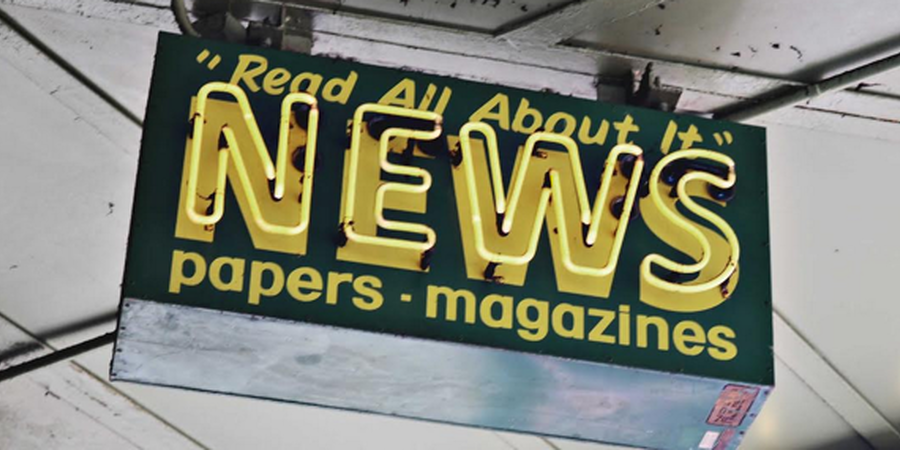Philadelphia, PA
- Read all about it, read all about it. In eras gone by, this was the cry of those stood on the street, selling newspapers bedecked with headlines that broke the latest news, shared stories of interest, and delivered all people needed to know in terms of local, national, and international news. Then came radio and television. With news bulletins each evening, the news became a televisual event, as families gathered around radios and then televisions as the latest news broke, sharing the experience on scheduled broadcasts, with occasional cut-ins to regular programming when events of such enormity occurred.
Social Media Success
Whether the assassination of a president, a moon landing, a political downfall, the death of a global star, or a sporting triumph for the ages, people heard news together, usually gathered around and at set times each day. How far we have come, and how much the way we hear, consume, and find out the breaking and unfolding news these days. Since the birth of rolling news, the internet, social media, and an almost innumerable number of constantly updating news websites, we consume much of our news when we want it, on whatever device we have to hand, on the go, at the office, at home, and around the clock with stories from around the world.
From social content, such as 10 NFL facts for you to read, to globally critical events, such as the commencement of war or the death of a world leader, news and information is now at our fingertips like never before. One of the predominant reasons why so many no longer rely on traditional, legacy, or mainstream media outlets, at least in print or through scheduled news bulletins, is social media. From Twitter to Reddit, Facebook to Buzzfeed, YouTube to Instagram, and an ever-growing number of platforms, the race is on to deliver news to an insatiable audience, where being the first to break a story can make all the difference.
Speed and Stories: Breaking News First Has Become the Social Media Holy Grail
First, past the post, first with the news, first to break the story. Whichever way you decide to phrase it, social media is often about ensuring that users of your platform hear it from you and hear the news first. For some, it’s local news that matters, with local people looking to social media to keep them informed about what’s happening nearby. For others, the importance of global events is what they use social media for, looking for updates, notifications, newsflashes, and all in almost real time; such is the need for constant and almost unrelenting levels of information.
According to some figures, the number of people who now use social media as their primary source for news is over two billion, making the competition for platforms delivering that news incredibly fierce. Looking to get out stories at almost breakneck speed is a demanding business, but then again, social media users around the globe are often equally as demanding in return for their patronage or loyalty. It is now, and it would seem, the younger generation that is driving this change in how we get our news, as online trends continue to develop.
When it comes down to it, breaking news has always been a competitive arena, as news broadcasts and radio stations are looking to lead the way. With social media, however, breaking news has become the holy grail. If you want customers to consider your platform to be at the forefront of keeping them informed with the news, you must deliver it quickly, constantly, and in easily accessed and digestible formats. From mobile notifications to that all-important tweet, the news is always the same in terms of the facts, but how quickly we find it out is all about the social media platform we trust.
Filtering Fake News and Making Social Media Trustworthy
Social media, as this article has discussed, has changed the way many people consume their news and receive their informational content. This is, I would proffer, almost incontrovertible in its assertion. But with this ability to disperse content instantaneously and without pause comes the issues around accuracy. News stories need, or at least should be corroborated before being released. This, of course, does not always happen, and as the way we consume our news has changed, as have some of the checks and balances that allow unchecked stories to be released into the wild, as it were.
Being social media savvy includes how we dissect news and separate the fact from the fiction, the truth from the fanciful. Although some fake news stories may be amusing, others can be dangerous in misinformation, which is why social media companies are using ever-sophisticated fact checking methods to avoid the pitfalls of fake news failures. Put simply, breaking news first on your social media platform is only as valuable as the information you are sharing is valid.
With social media news outlets showing no signs of diminishing, and as the younger generations lurch ever more to a full-out rejection of mainstream and erstwhile media outlets, our global habits around how we consume our news are on a now irreversible trajectory. One thing is certain, the success of social media in shaping the news agenda and sharing stories around the globe while also staying able to be used for entertainment and genuinely social purposes is something that has defined and continues to ensure their success.


